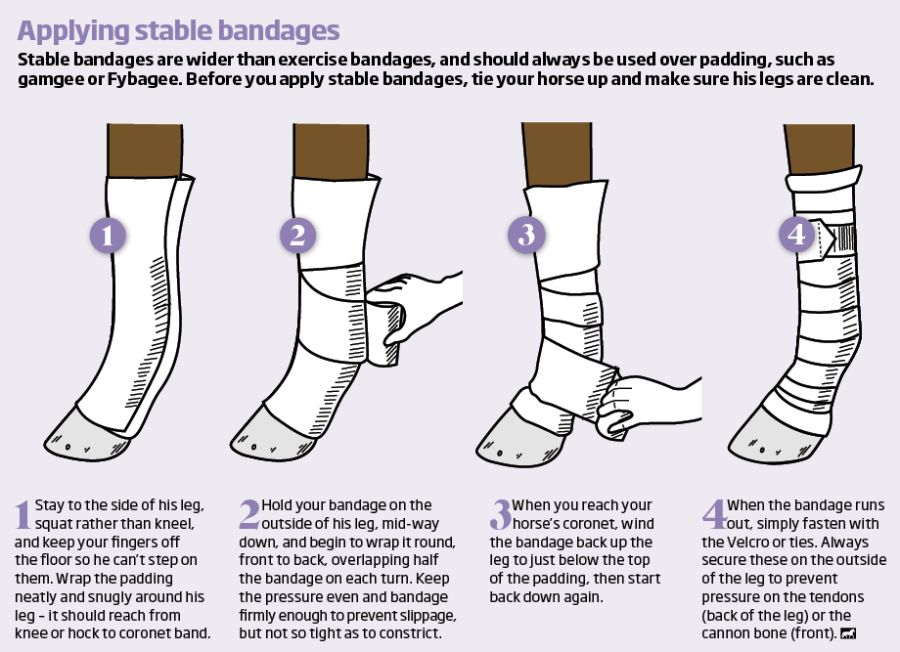Filled legs is the term used to describe a condition where the length of a horse’s legs (more commonly the hind pair) appear swollen. It’s often the result of the horse standing in their stable for longer than normal and not doing enough exercise.
Although finding that your horse has filled legs can be worrying, in most cases it’s a simple enough problem to resolve and doesn’t have to lead to a hefty horse health insurance claim, as long as you know what you’re doing.
Causes of filled legs
The veterinary term for filled legs is oedema, and it’s basically an abnormal accumulation of fluid in the body’s tissues.
Horses are prone to this ‘stocking up’ as they have relatively poor circulation in their legs. When a horse is moving, the action of their legs and feet hitting the ground acts like a pump and sends blood and lymphatic fluid back up from the limbs.
However, if they stand still this process slows down, allowing fluid to leak out of the blood vessels and reducing the return of lymph.
When to call a vet
In most cases, although filled legs can cause a horse to be a little stiff, it’s not serious and will usually resolve after exercise or the use of stable bandages. If it doesn’t resolve within a few hours after exercise, call your vet for advice.
It’s also vital that you check your horse for other symptoms of illness. If they’ve suffered a cut, are showing signs of pain or lameness, appear depressed or they are running a temperature, it could mean they are suffering an infection and you should call your vet straight away.
Filled legs can also be a sign of other health conditions in horses, including problems with the efficiency of a horse’s heart and conditions which result in low blood protein levels. There will usually be other signs of illness too, so always call your vet to investigate further.
Dealing with filled legs
When a horse has developed filled legs due to inactivity, walking them out and placing stable bandages on the legs can help reduce the swelling.
Wearing magnetic boots may also help some horses, as they are believed to help improve circulation.
Stable bandages are wider than exercise bandages, and should always be used over padding, such as Gamgee or Fybagee.
Before you apply stable bandages, tie your horse up and make sure their legs are clean.
When applying bandages, always position yourself to the side of the leg, squatting rather than kneeling so that you can move quickly if you need to, and keep your fingers off the floor so that your horse can’t step on them.
Stable bandages
See our illustration below for an easy-to-follow-guide to applying stable bandages:

Main image © Shutterstock; illustration © Your Horse Library/Kelsey Media Ltd









